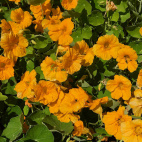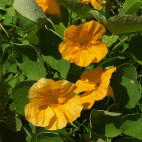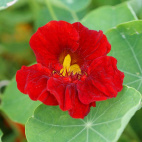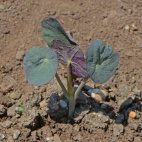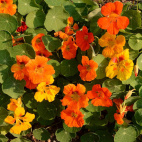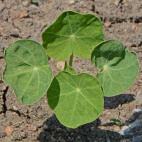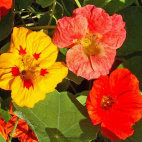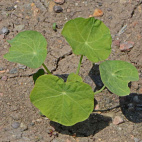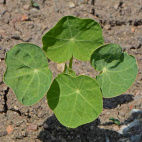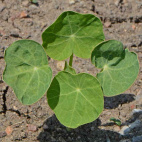Color
Availability
USDA Zone
Region
Type
Duration
Season
Germination
Soil
Sunlight
Height
Narrow Your Search
Color
Availability
USDA Zone
Region
Type
Duration
Season
Germination
Soil
Sunlight
Height
Wildflowers - Nasturtium Seeds
Nasturtiums are a popular annual flower that have beautiful round green leaves. The foliage is somewhat fragile, so they should be planted in a place in the garden where they will not be trampled. Nasturtium seeds are easy to grow, and are soon blooming. Because they are tender perennial wildflower seeds, they need a steady supply of moisture to fuel their fast development. Some people like to eat the spicy nasturtium perennial wildflowers and greens, but most gardeners grow them just for their beauty. Nasturtium perennials grow well in cool weather, and are a great flower to grow in cooler climates.
-
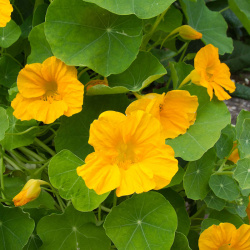 Out Of Stock
Alaska Gold Nasturtium Seeds
Tropaeolum nanum
Go for the gold with these rich yellow blooms, scattered among lovely variegated foliage. This easy-to-grow, compact annual also performs well as a container plant.Quick View$3.48 Pkt - $6.84 / Oz
Out Of Stock
Alaska Gold Nasturtium Seeds
Tropaeolum nanum
Go for the gold with these rich yellow blooms, scattered among lovely variegated foliage. This easy-to-grow, compact annual also performs well as a container plant.Quick View$3.48 Pkt - $6.84 / Oz -
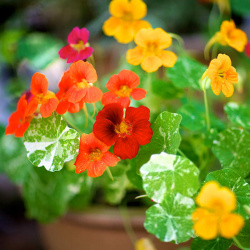 Alaska Nasturtium Seed Mix
Tropaeolum nanum
A dwarf variety, this mix comes in lovely shades of gold, orange, red, and yellow. This annual also has variegated leaves and is easy to grow, making it easy to have a beautiful flower bed with minimal effort.Quick View$3.48 Pkt - $6.84 / Oz
Alaska Nasturtium Seed Mix
Tropaeolum nanum
A dwarf variety, this mix comes in lovely shades of gold, orange, red, and yellow. This annual also has variegated leaves and is easy to grow, making it easy to have a beautiful flower bed with minimal effort.Quick View$3.48 Pkt - $6.84 / Oz -
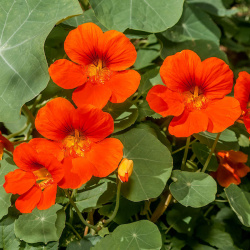 Empress of India Nasturtium Seeds
Tropaeolum nanum
A splendor to behold, these rich crimson flowers contrast with their blue-green foliage. This annual is compact and easy to grow, making it a great container plant.Quick View$3.48 Pkt - $6.84 / Oz
Empress of India Nasturtium Seeds
Tropaeolum nanum
A splendor to behold, these rich crimson flowers contrast with their blue-green foliage. This annual is compact and easy to grow, making it a great container plant.Quick View$3.48 Pkt - $6.84 / Oz -
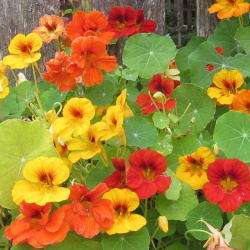 Jewel Nasturtium Seed Mix
Tropaeolum nanum
Like sparkling jewels, this beautiful mix of variegated gold, orange, red, and yellow will delight the eyes. This annual is easy to grow and can be easily grown by the gardening novice.Quick View$3.48 Pkt - $6.84 / Oz
Jewel Nasturtium Seed Mix
Tropaeolum nanum
Like sparkling jewels, this beautiful mix of variegated gold, orange, red, and yellow will delight the eyes. This annual is easy to grow and can be easily grown by the gardening novice.Quick View$3.48 Pkt - $6.84 / Oz -
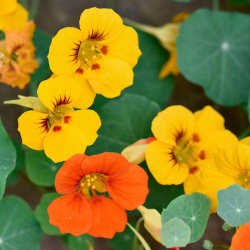 On Sale!
Tall Nasturtium Seed Mix
Tropaeolum majus
Scatter these seeds anywhere for a gorgeous mix of large gold, orange, red, and yellow blossoms. This popular annual is tall for the nasturtium family, so it will need more room than the dwarf varieties. This flower is easy to grow and is a good wildflower for the beginning gardener.Quick Viewx
On Sale!
Tall Nasturtium Seed Mix
Tropaeolum majus
Scatter these seeds anywhere for a gorgeous mix of large gold, orange, red, and yellow blossoms. This popular annual is tall for the nasturtium family, so it will need more room than the dwarf varieties. This flower is easy to grow and is a good wildflower for the beginning gardener.Quick ViewxTall Nasturtium Seed Mix
Tropaeolum majus
Scatter these seeds anywhere for a gorgeous mix of large gold, orange, red, and yellow blossoms. This popular annual is tall for the nasturtium family, so it will need more room than the dwarf varieties. This flower is easy to grow and is a good wildflower for the beginning gardener.
$3.48 Pkt - $5.96 / Oz -
 On Sale!
Tom Thumb Nasturtium Seed Mix
Tropaeolum nanum
No need for a green thumb with this popular mix of gold, orange, red, and yellow blossoms. This variety is the smallest of the nasturtium family, making it ideal for containers or hanging baskets.Quick View$3.48 Pkt - $6.84 / Oz
On Sale!
Tom Thumb Nasturtium Seed Mix
Tropaeolum nanum
No need for a green thumb with this popular mix of gold, orange, red, and yellow blossoms. This variety is the smallest of the nasturtium family, making it ideal for containers or hanging baskets.Quick View$3.48 Pkt - $6.84 / Oz -
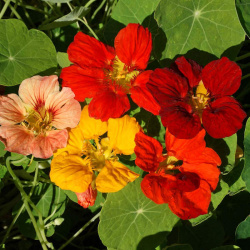 Whirleybird Nasturtium Seed Mix
Tropaeolum nanum
An old-fashioned variety, these beautiful rose, tangerine, mahogany, red, gold, and cream blossoms look cheerfully upwards. This easy-to-grow variety is compact and performs well as a container plant.Quick Viewx
Whirleybird Nasturtium Seed Mix
Tropaeolum nanum
An old-fashioned variety, these beautiful rose, tangerine, mahogany, red, gold, and cream blossoms look cheerfully upwards. This easy-to-grow variety is compact and performs well as a container plant.Quick ViewxWhirleybird Nasturtium Seed Mix
Tropaeolum nanum
An old-fashioned variety, these beautiful rose, tangerine, mahogany, red, gold, and cream blossoms look cheerfully upwards. This easy-to-grow variety is compact and performs well as a container plant.
$3.25 Pkt - $8.46 / Oz
Nasturtiums are a popular annual flower that have beautiful round green leaves. The foliage is somewhat fragile, so they should be planted in a place in the garden where they will not be trampled. Nasturtium seeds are easy to grow, and are soon blooming. Because they are tender perennial wildflower seeds, they need a steady supply of moisture to fuel their fast development. Some people like to eat the spicy nasturtium perennial wildflowers and greens, but most gardeners grow them just for their beauty. Nasturtium perennials grow well in cool weather, and are a great flower to grow in cooler climates.






